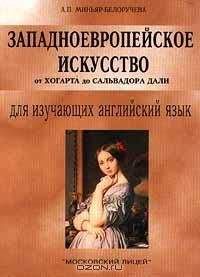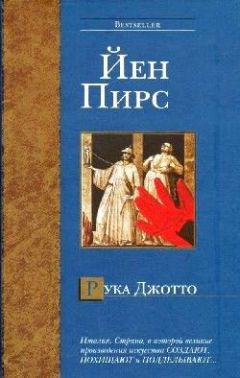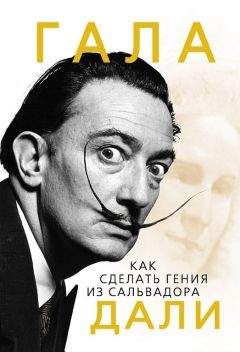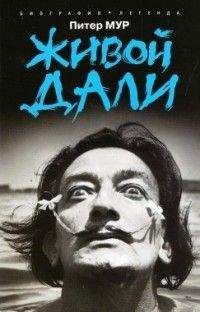Gauguin's departure from Western artistic tradition was prompted by the rebellious attitude that impelled his break from middle-class life. But Gauguin, too, was not an Impressionist at heart. He sought art using ideas rather than the tangible world as a starting point. In this he was influenced by the artist Emil Bernard and by the Symbolist poets Rimbault and Baudelaire. Joining him in renouncing naturalism were the Symbolists, and van Gogh.
Gauguin renounced the formlessness of Impressionist vision and recommended a return to the «primitive» styles as the only refuge for art. What he sought was immediacy of experience. Gauguin did this in his brilliant Vision After the Sermon or, alternatively, Jacob Wrestling with the Angel, painted in 1888, during his second stay in Brittany. This painting marked Gauguin break with Impressionism to follow his own style. He rejected realism in favour of the imagination, and through his expressionist means he made one of the most influential impacts on Western art. In the background Jacob is depicted wrestling with the angel. This event forms the lesson in the Breton rite for the eighth Sunday aflei Trinity. On the preceding day the blessing of horned beasts took place, followed by wrestling contests and a procession with red banners, and at night fireworks, a bonfire that turned the fields red with its glow, and an angel descending from the church tower. In the foreground Gauguin has shown at the right the head of a priest and next to it praying women in Breton costumes. Although the figures are outlined with the clarity that Gauguin derived from his study of Oriental, medieval, and primitive arts, the contrast between the large foreground heads and the smaller groups in the distance still presupposes Western perspective, and is drawn from theatre subjects developed by Duamier, Degas, and Renoir.
In Oceania Gauguin was influenced only to a limited degree by the art of the natives with whom he lived. He took his flattened style with its emphasis on brilliant colour to the South Seas with him, and fitted into it the people whose folkways and personalities attracted him. The attitudes in which he drew and painted them still derive from Impressionist vision. In The Day of the God, of 1894, a happy nude woman and her two children rest at the water's edge below the towering image of the god in the background. But while the poses are free in the Western tradition, the contours have been restored, as continuous and unbroken as in Egyptian or Archaic Greek Art.
Before his death Gauguin said, «I wanted to establish the right to dare everything… The public owes me nothing, since my pictorial oeuvre is but relatively good; but the painters who today profit from this liberty owe me something.» So indeed they did, especially Matisse, but no more than Cubism and abstract movements owe to the pioneer researches of Cezanne.
Make sure you know how to pronounce thefollowing words:
Paul Gauguin; Duamier; Degas; Breton; Brittany; Oceania; van Gogh; Egypt; Archaic; Marquesas; Tahiti; Peru; Jacob; Martinique; bourgeois; Rimbault.
NotesVision After the Sermon – «Видение после проповеди»
The Day of the God – «День Бога»
TasksI. Read the text. Make sure you understand it. Mark the following statements true or false.
1. Paul Gauguin began painting as a professional.
2. In 1880 Gauguin devoted his life to business career.
3. Gauguin was convinced that European urban civilisation was incurably ill.
4. Gauguin painted the Vision After the Sermon in 1879.
5. The poses in Gauguin's paintings are as continuous and unbroken as in Egyptian or Archaic Greek Art.
6. Gauguin recommended a return to the Old Masters.
II. How well have you read? Can you answer the following questions?
1. What did Paul Gauguin do early in life? How old was Gauguin when he began painting? What style did Gauguin absorb? Where did he exhibit his works from 1879 to 1886?
2. Why was Gauguin's life nomadic?
3. What did Gauguin renounce and what did he recommend? What did Gauguin seek? What is depicted in the Vision After the Sermon? How did Gauguin outline the figures? What is the subject of this painting? What did Gauguin depict in the background? What did Gauguin show in the foreground at the right? What did it presuppose?
4. What did Gauguin take to the South Seas with him?
5. What is represented in The Day of the God?
6. What did Gauguin say before his death?
III. i. Give Russian equivalents of the following phrases:
to begin painting as a amateur; to identify painting with; bourgeois existence; European urban civilisation; nomadic life; the departure from Western artistic tradition; the rebellious attitude to; to break from middle-class life; to renounce the formlessness of Impressionist vision; to presuppose Western perspective; the art of the natives; flattened style; to outline figures with clarity; to restore the contours.
ii. Give English equivalents of the following phrases:
ассоциировать живопись с; бегство от европейской городской цивилизации; бунтарское отношение к; воссоздать контуры; четко обозначить фигуры; искусство туземцев; разрыв со средним классом; критиковать отсутствие формы в картинах импрессионистов; буржуазный образ жизни; кочевая жизнь; плоскостной стиль.
iii. Make up sentences of your own with the given phrases.
iv. Arrange the following in the pairs of synonyms:
a) civilisation; amateur; existence; rebellious; emphasis;
b) defiant; accent; non-professional; being; culture.
IV. Here are descriptions of some of Gauguin's works of art. Match them up to the titles given below.
1. In the background Jacob is depicted wrestling with the angel.
2. A happy nude woman and her two children rest at the water's edge.
a. The Day of the God
b. Vision After the Sermon
V. Translate the text into English.
В истории искусства имя Поля Гогена связывают с символизмом, получившим в конце XIX – начале XX вв. название примитивизм. Несмотря на то, что Гоген стал систематически заниматься живописью довольно поздно, ему удалось выработать собственную манеру письма. Разочарованный в европейской цивилизации, Гоген бежал в экзотические страны. Природа и жизнь туземных племен стали источником его творческого вдохновения. Гоген сознательно пришел к примитивизации формы, стремясь приблизиться к художественным традициям туземного искусства. В общении с первобытной природой Гоген хотел обрести иллюзорный покой. Создав стилизацию таитянского искусства, Гоген вызвал интерес к искусству неевропейских народов.
VI. Summarize the text.
VII. Topics for discussion.
1. Gauguin as a life-long rebel.
2. Gauguin as a founder of modem art.
Unit XVI Van Gogh (1853-1890)
Van Gogh identified art with emotion. The son of a Protestant Dutch minister, the young Van Gogh was by turns the employee of a firm of art dealers, a language teacher, a student of practical evangelism and a missionary to the coal miners. Through these fragmentary careers runs the theme – a love of humanity, and of life. This love was the theme of his art as well, and was to produce one of the most intensely personal witnesses in the spiritual history of mankind. Even Van Gogh's mental illness, that brought about his frequent hospitalisations and his untimely death, did not prevent him from becoming the only Dutch painter whose stature could set him on a level with the three great Dutch masters of the seventeenth century.
In 1881 Van Gogh started to study art, but remained in a somewhat provincial Dutch tradition, out of touch with the colouristic discoveries of Impressionism. In 1886 he came to Paris for a two-year stay with his brother Theo, and under the influence of Impressionism and Japanese prints freed his palette and worked out a fresh, new, highly original sense of pattern in contour. Having shown signs of depression and emotional instability, he left the north early in 1888, hoping to find a happier existence in Arles, in Provence. During the next two years, he painted at white heatoften a canvas a day – his series of masterpieces in a style unprecedented in European art. He was fascinated by the beauty of the landscape, by the southern light, absolutely different from that of northern France with its mists and rain. He noted that the intense sunlight could drive a man mad.
An excellent example of his brief period of happiness is his A View of La Craw, painted in June 1888, with its almost Renaissance perspective of fields and farms, a surprising revival of the principles that had been swept aside by the Impressionists and Gauguin. To Van Gogh space construction became an expressive device, moving the observer forcefully toward the distant mountains. The whole picture is coloured in red-gold and blue that were his own colours. The thick pigment, blazing colour, and strong, straight strokes are Van Gogh's personal transformation of Impressionist technique. The happy period did not last long. In September 1888 Van Gogh painted the first of his disturbing pictures, The Night Cafe. The perspective is so strongly exaggerated here that it seems to catapult the observer into the end wall, in which the red-and-green contrast is insoluble.
In late December of the same year Van Gogh threw with violence a knife at Gauguin and then cut off his own ear. Van Gogh was cared for at first in the hospital at Arles, and then in the asylum at nearby Saint-Remy. He was allowed to paint and produced beautiful and moving works. Van Gogh's Self-portrait, painted in the asylum in September 1889, reveals the period of desperation through which the artist had passed. The brushstrokes are now curved and vibrate throughout the picture. In a mood of renewed confidence, the artist has endowed the painting with his own physical colouring: his ivory face, gold hair, red-gold beard float in tides of deep blue, the colour of the artist's eyes. Only in Rembrandt's self-portraits it is possible to find such intense self-revelation.
In the fields near the asylum, by day and at night, Van Gogh drew and painted the wonders of the earth and sky. These pictures communicate a mood of self-identification, which is the mark of religious ecstasy in Van Gogh. The Starry Night, painted in June 1889, shows not only the stars Van Gogh observed but exploding masses of gold fire, expanding against the blue. Two of these swirl through the sky in a kind of cosmic embrace, unimagined by the sleeping town below.
In May 1890 Van Gogh went to Paris for a three-day stay with his brother, then to Auvers where Dr. Paul Gachet took care of him. Despairing of the cure, he shot himself on July 27, and died two days later. For all the tragic circumstances of his life, Van Gogh won a spiritual victory in opening a new path for artistic vision and expression.
Make sure you know how to pronounce the following words:
Vincent Van Gogh; Theo; Protestant; evangelism; Provence
NotesA View of La Craw – «Вид на долину Ла Кро»
The Night Cafe – «Ночное кафе»
The Starry Night – «Звездная ночь»
TasksI. Read the text. Make sure you understand it. Mark the following statements true or false.
1. In 1886 Van Gogh started to study art but he was out of touch with the colouristic discoveries of Impressionism.
2. Van Gogh's favourite colours were green, white and blue.
3. In Italy Van Gogh painted his series of masterpieces in a style unprecedented in European art.
4. Van Gogh constantly drew and painted the wonders of the earth and sky.
5. Van Gogh was fascinated by the beauty of the landscape of northern France with its mists and rain.
6. Van Gogh won a spiritual victory in opening a new path for artistk vision and expression.
II. How well have you read? Can you answer the following questions?
1. What did Van Gogh do in his youth? What was the theme of Van Gogh's art? What did Van Gogh work out in Paris under the influence of Impressionism and Japanese prints?
2. Why did Van Gogh leave Paris? What did he do during the next two years? How many canvases did Van Gogh paint in Arles? What inspired Van Gogh?
3. What was revived in A View of La Craw? What expressive device was used in this painting? How did Van Gogh transform the Impressionist technique?
4. Why is The Night Cafe characterised as a disturbing picture? What happened in late December of 1889? What was Van Gogh allowed to do in the hospital?
5. What does Van Gogh's Self-Portrait reveal? What colours dominate in this work of art? What mood does the picture communicate?
6. What does The Starry Night represent? What were Van Gogh's innovations?
III. i. Give Russian equivalents of the following phrases:
to identify art with emotion; the colouristic discoveries of Impressionism; to free the palette; space construction; to work out a new, original sense of pattern in contour; emotional instability; Renaissance perspective; an expressive device; brushstrokes vibrate throughout the picture; to endow the painting with; cosmic embrace; tragic circumstances; to win a spiritual victory; artistic vision and expression; a style unprecedented in European art; transformation of Impressionist technique; against the blue.
ii. Give English equivalents of the following phrases:
одержать духовную победу над; модифицирование техники импрессионистов; колористические открытия импрессионистов; быть очарованным; мазки пульсируют в картине: видение художника; трагические обстоятельства; объятие космоса; одержать духовную победу; оригинальный стиль; на голубом фоне; построение пространства; для достижения большей выразительности; разработать новый оригинальный контур; перспектива Ренессанса.





